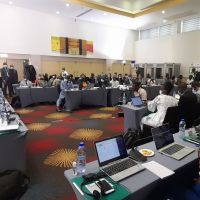How can governments enable a circular economy?
Ez is érdekelhet

The circular economy is often discussed in terms of the opportunities for new business models and to design new products and services. However, intuitively, the opportunities for an effective and prosperous transition would be significantly enhanced by national and regional governmental policy that supports and enables positive economic change. That intuition has recently been put to the test.
A pilot study of Denmark has been conducted in which the impacts of a set of policies, designed to enable the transition the circular economy, have been theoretically tested and analysed for Denmark. The study focused on five specific sectors: food & beverage, construction & real estate, machinery, plastic packaging and hospitals. The modelling concluded that by 2035, circular economy policy initiatives could unlock a number of benefits in comparison with the “business as usual” scenario, including an increase in GDP, the creation of additional jobs, a reduction of Denmark’s carbon footprint and an increase in net exports.
The pilot study was part of a larger report, “Delivering the circular economy: a toolkit for policymakers”, written and produced by the Ellen MacArthur Foundation working with key collaborators the Danish Business Authority and Danish Environmental Protection Agency, analytical support by the McKinsey Center for Business and Environment, macroeconomic and policy analysis by NERA Economic Consulting, and funding from MAVA Foundation.
Denmark was deliberately selected for the pilot study as a country with a history of using innovative policies to stimulate resource efficient business activity, including the incremental raising of landfill taxes since 1987 and the targeting of full independence from fossil fuels by 2050. However, the research shows that even in the relatively advanced scenario of Denmark, there are significant opportunities for the national economy in utilising enabling policies. Though the study included strong involvement of various Danish stakeholders it was a theoretical exercise and that the further development and implementation of these ideas is completely up to Danish decision makers.
Specifically, the economic modelling carried out in the study found that pursuing a set of specific policies in relation to the five focus sectors could deliver a 0.8-1.4% increase in GDP by 2035 compared against the ‘business as usual’ example, an additional 7,000-13,000 job equivalents, an extra 3-7% carbon footprint reduction and a 3-6% increase in net exports. It’s worth noting that these figures, though impressive, are also conservative, and do not attempt to capture the expected full effect of the potential multiplier impact of shifting models. What’s more, these estimates relate to 25% of the total Danish economy, and one large area not included is mobility, an area where the recent “Growth within: a circular economy vision for Europe” report found enormous economic potential for circular economy models.
Many of these advantages are gained by maximising the value of material flows, where most waste and by-products are still only used for relatively low-value applications. The research found that of the 93% of waste diverted from landfill, only two thirds is recycled, while the rest is incinerated. Even when materials are recycled, opportunities to retain material value are frequently missed. For example, in the construction sector, 87% of materials are recycled, but less than 1% of building components and materials are reused.
A closer look at the opportunities in the construction sector
The biggest quantitative opportunity identified in the new analysis was in the construction sector, where three main possibilities are explored with a combined economic value estimated to be between EUR 850-1200 million per annum by 2035.
It looks at the possibility of saving building time and the amount of materials wasted, through increased modularisation and further utilisation of 3D-printing. It looks at retaining high material value and cutting input costs by designing buildings for disassembly and using recycled rather than virgin materials. Finally it investigates the prospects for new business models, both space sharing (office and residential), and the possibility of a service model, where construction companies retain ownership of the building material and maximise their value after use.
Among the policy options suggested to help take advantage of these opportunities are the introduction of complementary building codes, which include some appreciation of the value of circularity in the materials chosen and/or construction techniques utilised. Also highlighted were the altering of public procurement practices to support the shift in the public sector, adjusting legal frameworks to regulate the materials used in 3D-printing, and closely linked to that, the creation of a positive materials list as recommendations for the sector.
In total, the Denmark pilot focused on 10 specific opportunities across five sectors, listed in the figure below:

The opportunities are all being pursued to some extent in Denmark, but the study identifies the possibility to scale up activities. For each potential initiative, the report presents the economic potential by 2035, key barriers and the policy options, all located in the Danish context.
Similar economic gains are highlighted across the board. The development of cascading bio-refineries, that valorise by-product and waste streams and reduce avoidable food waste, was predicted to be worth EUR 450-750 million per annum by 2035, while a combination of increased remanufacturing and service business models could create a net value of EUR 150-250 per annum.
The Danish case study highlights both the possibilities for policymakers to create economic value through one specific strategy, but also the size of the opportunity once a range of sectors and opportunities are explored.
An actionable policymakers toolkit
The toolkit as a whole concludes that regardless of a nation’s ‘starting point’, there are circular economy opportunities that can be supported through enabling policies. It also indicates that deciding upon and successfully implementing an effective set of policy initiatives requires a level of cross-governmental department and industry involvement with focused sector analysis also being a critical element.
“Delivering the circular economy: a toolkit for policymakers” is a report designed to provide actionable policy solutions that can be implemented by policymakers globally.
It also discusses the barriers to circular economy activities and highlights the role that policy can play in facilitating businesses that are making the transition using Denmark as an example and delving deeper into the opportunities for circular economy enabling policies.
As the circular economy is implemented by more businesses globally, the role and importance of enabling policies will also grow. The toolkit for policymakers is an important part of that developing story, setting out the current landscape of circular economy policy options, but also moving beyond conversation and aiming to inspire action. In reality, it is only by experimenting and putting theory into practice that circular economy policy options and their related opportunities can be truly understood.
Source: circulatenews.org/2015/08/how-can-governments-enable-a-circular-economy/







